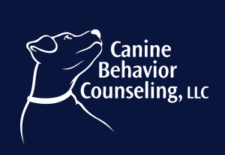Socializing Your Puppy – Why is it so vital?
When we bring our new puppies home they must learn new smells, friends and sounds. Our new puppies are often easily over stimulated, remember just like a small baby, they need several naps a day! We often find our puppies very inquisitive and fun as they learn their new surroundings at about 10 weeks of age. This is what we all expect in our new family member!
Then at about 16 weeks of age, things change for our puppies. In the wild, this is when a mother would begin to push her puppies away a bit and encourage them to be more independent. Puppies that remain curious and friendly wouldnʼt survive for very long. By nature, after 16 weeks of age, our puppies begin to seek things with much more caution and suspicion. They often become fearful of what they have not encountered before. This means that we have a small window of opportunity to introduce our puppies to many new sights, smells and most importantly, sounds!
This process of introductions is known as Socialization. Some people think it only involves meeting other dogs. While that is a large part of socialization, it is only one part of the equation. Slowly introducing our puppies to the world we live in is vastly important. Even if you are providing your puppy with ample love and attention, he still needs to be introduced to new situations in a controlled fashion. It is IMPORTANT, when you introduce your puppy to new places and people, you must be CALM AND CONFIDENT. If you are worried about your puppies feelings, than he will be worried too. All dogs, even puppies are exceptional at picking up on our feelings of nervous, anxious, worried or confident.
EXAMPLE, Suppose you are walking through a park and you come up to a large statue. Your puppy becomes frightened barks frantically and pulls away. What should you do? Help your puppy see the statue for what it is. So, stay calm and ask your puppy to walk back and forth in front of the statue at a distance that he feels safe. With each pass, get a little closer to the statue all the while feeding your puppy something tasty! Continue passing slowly back and forth until your puppy will take a treat while sitting in front of the statue. Yes, this may take some time, but is well worth the effort. You have just helped your puppy “Rebound” from something scary.
If time is an issue when your dog has a bad reaction, simply loosen his leash and distract him with a toy or treat in a very calm manner. He should only feel your confidence on the lead and assume if “my leader is confident, I will be too”. Remember, also to give your puppy a treat or affection when he remains calm during odd sounds. Many of us do not reward our puppies when they act calmly. Why is this? Remember to REWARD the behavior you want. This will give your dog confidence as he learns how you expect him to behave.
Finally, knowing your dogs breed characteristics will help you better shape his behavior. Such as German Shepherds may be more protective, something you will want to be aware of and handle at an early age if necessary. Boarder Collies are sensitive to sounds and trained to respond to them. Shelties are great for letting you know when there is an intruder in the area, therefore barking is a part of their make-up. So introducing your puppy to many new environments with positive associations as this is the key to having a happy and balanced dog!

